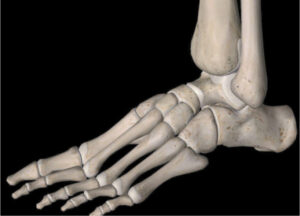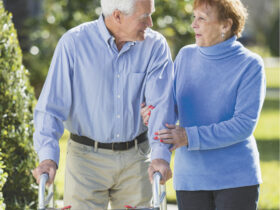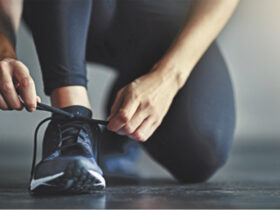By Dr. Scott Bradley PT, DPT, ECS
 The ankle (Talocrural) is one of, if not THE most complex joint in our body. If you do not have enough dorsiflexion motion in the ankle (bringing the foot up towards your face) then you will have to compensate when squatting down by sticking your butt out, increasing the lordosis or arch in your low back, and flexing forward at the hips!
The ankle (Talocrural) is one of, if not THE most complex joint in our body. If you do not have enough dorsiflexion motion in the ankle (bringing the foot up towards your face) then you will have to compensate when squatting down by sticking your butt out, increasing the lordosis or arch in your low back, and flexing forward at the hips!
These compensations will cause more load to be put through the low back and knees. This improper direction of forces through the low back and knee joints can cause early degenerative changes (osteoarthritis, meniscal fraying, disc herniation, stenosis etc.).
How to Fix
1. Short term – Place a small weight plate or on an incline when squatting. If you have ever looked at a weightlifters shoe you will notice that they have a bigger heel. This assists them in getting low during their lifts.
The raised heel will allow you to reach 90 degrees or even go past 90 degrees when squatting but be advised that it will increase the amount of force through the knee! We advise squatting with low weight when elevating the heels due to this increased force on the knees.
“Remember the best way to increase motion in any joint is to actively move and load that joint.”
Long term
Easy at home ankle mobility exercises:
1. Eccentric heel raises
This exercise increases the strength and the length of the calf muscles which are the culprits of limited ankle movement. Simply stand up on your toes, lifting one leg up, so you are standing on the tight ankle, then slowly lower your heel back down to the floor for a count of 5 seconds. Repeat this for 30 repetitions.
2. Standing straight calf stretch – This exercise targets the big calf muscle that you see called the gastrocnemius Stand with arms against a wall in a tandem stance with the ankle to be stretched in the rear. Keep the rear foot flat and the rear knee straight. Slowly sink your hips forward and flatten your rear foot into the floor. This stretch should be felt in the meat of your calf muscle. Hold the stretch for 30 seconds for a count of 3.
3. Standing bent leg calf stretch – This exercise targets a muscle deeper in the leg that in most cases is the main culprit of limited ankle motion called the soleus. This is the same as the exercise above but with the back knee bent. This stretch should be felt at the base of the heel. Hold the stretch for 30 seconds for a count of 3.
4. Kneeling ankle pulses with a towel
This is a self mobilization exercise for the ankle joint.This exercise is simple yet effective! Begin by kneeling on the ground with the tight ankle in front. Wrap a towel around the front of the ankle (make sure the towel is between the two bones on either side of your ankle). Pull the towel towards your butt so the towel is pulling on the front of your ankle. Then slowly shift your body weight forward and backward keeping the front heel down.
We recommend pulsating back and forth with no hold. It is more effective if this is done with the front ankle on a step or a 5-7 inch elevated service as this will better target the ankle joint! Complete for 30 repetitions.
5. Big toe and bent knee stretch
This exercise will stretch the plantar fascia and the Soleus muscle at the same time! Everyone forgets about the importance of not only first toe mobility in normal ambulation but also the importance it has on limited ankle motion and Achilles tendinopathy.
The plantar fascia connects indirectly to the Achilles tendon through fascial lines and is one of the main contributors to ankle stiffness. Begin by placing the toes of the stiff ankle on the wall, bend the front knee and lean forward into the wall, a stretch should be felt in the sole of the foot and the base of the heel. Hold the stretch for 30 seconds for a count of 3.
These are exercises that can be easily done at home while watching TV. The ankle joint is the strongest joint biomechanically in our body. Just think, it can lift your whole body weight up with relatively small muscles! If the ankle is too stiff to move the body, the body will adapt and those forces will be applied elsewhere to other joints; that are not as well equipped to deal with the load applied to them.
If you have any questions or these exercises are too difficult/painful to perform do not hesitate to email us. We are here to help you feel better through movement!
239-244-3835
edgeptflorida.com









